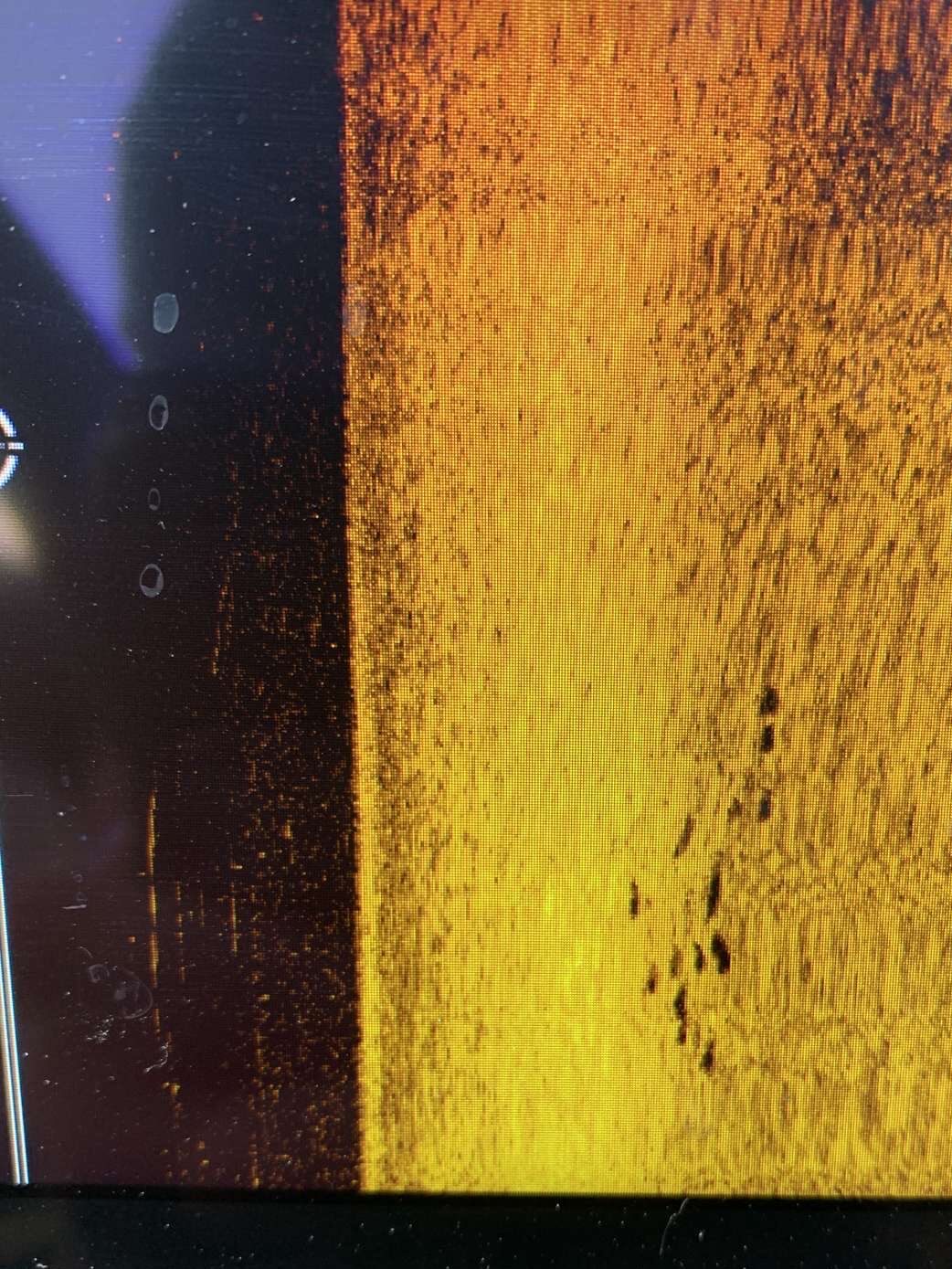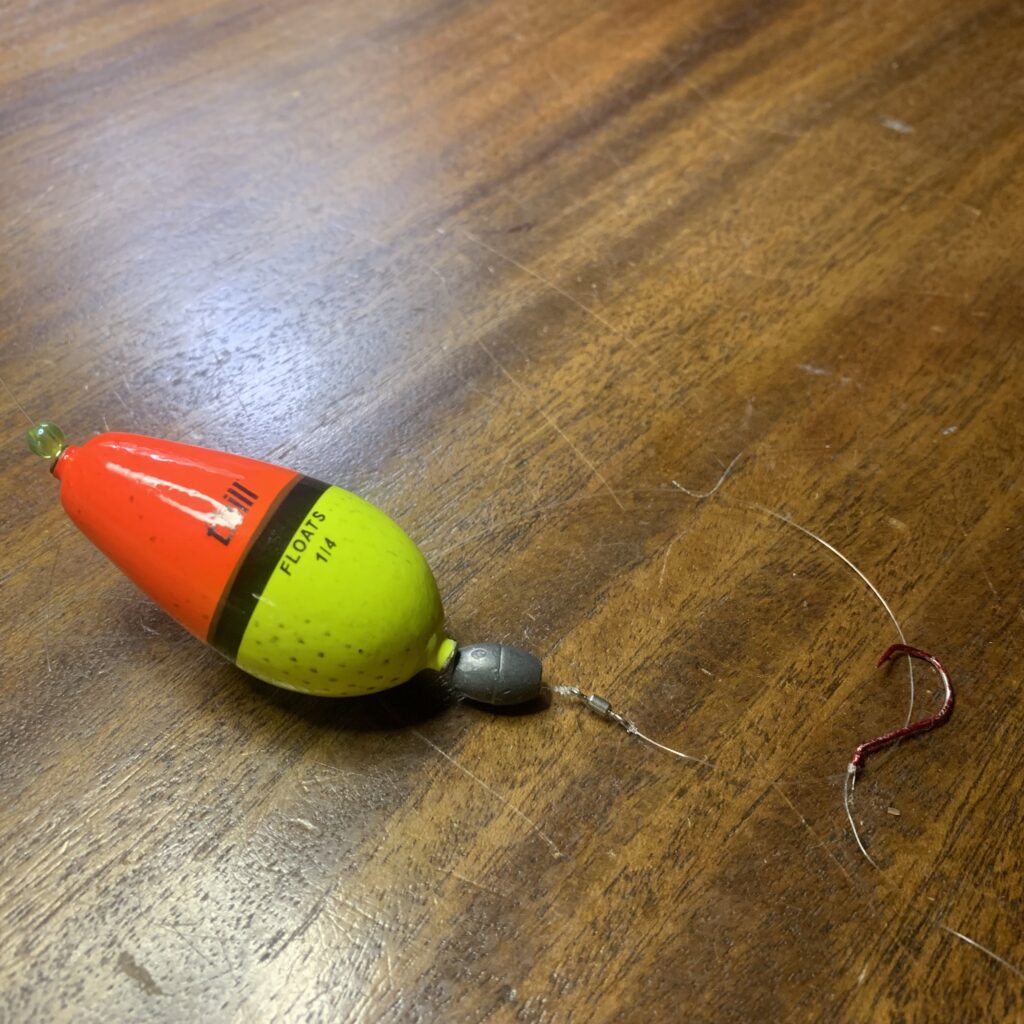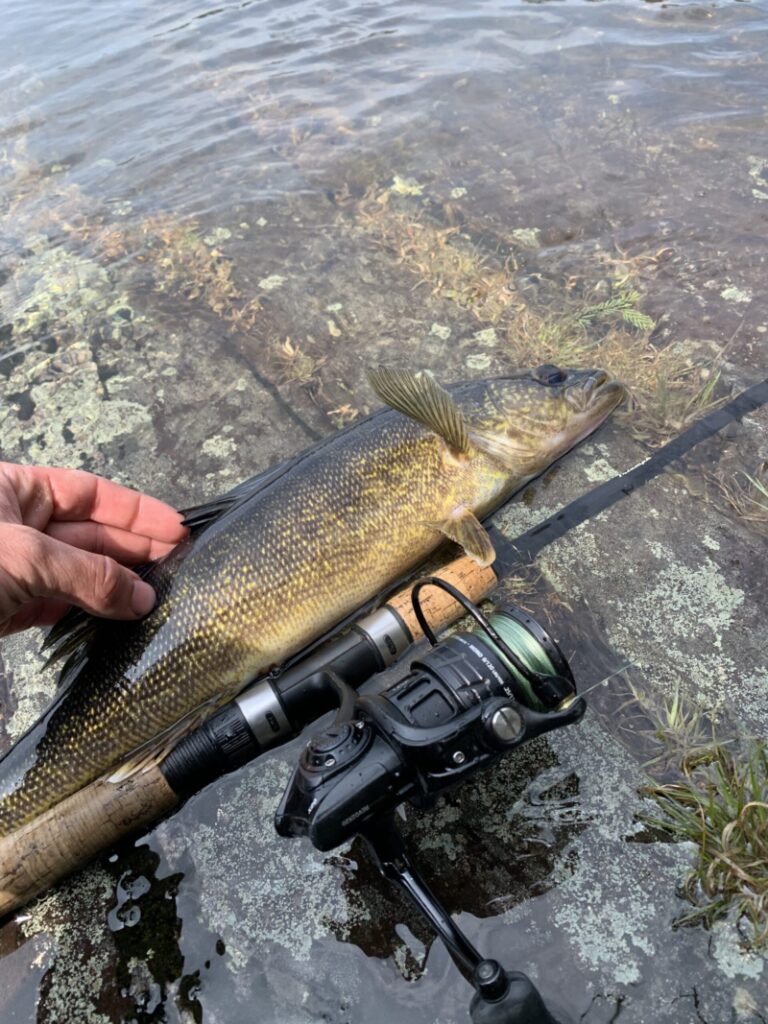Walleye fishing for beginners can be intimidating, as walleyes tend to be deep in locations far offshore. Additionally, walleyes have grown the reputation for being finicky and very difficult to catch at times. I hope to simplify walleye fishing for beginners out there and help you have greater success the next time on the water. The Angler’s Line is about promoting the conservation of this great resource we all enjoy, so we hope that you would get behind us and join this mission.
The Angler’s Line is a participant in the Amazon Services LLC Associates Program as well as other affiliate programs designed to provide a means for sites to earn advertising fees by linking to Amazon and affiliated sites at no extra cost to you.
Walleye Location For Beginners
When talking about walleye fishing for beginners, location may be one of the most important things for new anglers to understand. Walleyes are known to migrate long distances throughout the year. Like most other predators, find the baitfish and you’ll find the walleye. Knowing a walleyes prey is important, check out this article for more information. There are a few rules of thumb however which will put on walleyes in various seasons.

Spring
Walleyes tend to move to shallow shoreline flats in the spring to spawn. Furthermore, walleye fishing areas with current can be productive during the spring since walleyes like to spawn in rivers. Spawning typically occurs in the spring when the water temperature reaches is in the mid to lower 40 degree range. After spawning, walleye may move to nearby deeper areas to recover. Look for them in deeper water adjacent to their spawning grounds, such as drop-offs, underwater humps, or deeper channels. They may also move to nearby structures like submerged weed beds or submerged timber.
Summer
During the summer, walleyes move off shoreline cover and onto deeper main-lake structures. Main-lake structures are pieces of cover that are in close proximity to the lakes basin (deepest area). This could be a main-lake point, hump, steep-break, etc. Walleyes like to sit in deeper water throughout the daytime during the summer, and will move up to shallower nearby structures during low-light periods. In some heavily pressured locations, walleyes become much more active during the night in the summer. Consider fishing shallow flats during the summer nights since walleyes move shallower to feed under the cover of darkness.
Fall
When fall arrives, walleyes either move deep or shallow. When looking for walleyes deep (25ft-30ft), focus on areas with steep break lines close to the basin. Be careful when targeting walleyes deep, as most fish caught in more than 30ft of water die when released. When looking shallow, focus on shallow flats with submergent vegetation. Walleyes will corral large bait schools in the fall, so shallow bays can be very productive this time of year. Current is another key factor to finding walleye in shallow water in the fall. Walleye are known to migrate towards river mouths and areas with significant current flow during the fall. They are attracted to these locations as migrating baitfish and other prey species concentrate in these areas this time of year.
Winter
When winter sets in, walleyes tend to stay deep on the main-lake areas. Look for drop-offs, underwater points, humps, and other structures in deeper water. Walleyes seek out areas with stable water temperatures and where baitfish may be present. You can find walleye on the same locations in the winter as you did in the summer. Weeds die back this time of year, so look for hard-bottom structures that are available. Focus on areas with rock piles, reefs, submerged timber, or other bottom structures.
Walleye Live Bait
Traditionally, live bait has been popular among anglers for walleye fishing. This makes sense as live bait is relatively easy to use, making it a good choice when walleye fishing for beginners. There are three main types of live bait used which include minnows, leeches, and nightcrawlers. Each serves a different purpose and is used for different applications and at different times of the year. Be sure to adhere to your local and state fishing regulations for live bait fishing.

Minnows
Minnows excel for walleye fishing when the water-temperatures are colder. Although minnows can work during all seasons, I recommend focusing on minnows when the water temperature is below 65 degrees. This typically occurs in the spring and fall seasons. Some of the most productive ways to fish minnows include a jig and slip bobber. Using a jig and minnow can be a great way to cover water. Once you find a few walleye, employing a slip bobber in addition can help land a few more.
Leeches
Leeches work best for walleye fishing during the warmer seasons. Focus on using leeches when the water temperature gets above 65 degrees during the spring and summer months. Some of the most productive ways to fish a leech include a jig, lindy rig, and slip bobber. Lindy rigs and slip bobbers fish slow, so I recommend using these presentations once you have already located a school of walleye. Additionally, Lindy rigs work best when the bottom is sand or gravel without much submergent vegetation.
Nightcrawlers
Nightcrawlers tend to be much more active during the warmer months. For this reason, nightcrawlers work best for walleye fishing during the summertime. Focus on using crawlers when the water temperature gets above 70 degrees. Some of the most productive ways to fish a nightcrawler include a jig, spinner rig, and slip bobber. When fishing a jig and crawler for walleye, I recommend using only half of the worm. This will increase the scent and prevent panfish from nipping the tail off.
Walleye Trolling Presentations

Trolling for walleye is a beginner friendly method to get new anglers started. Focus on trolling during the summer months. The best areas to troll are large expansive pieces of cover that have very gradual changes in depth. It is very difficult to keep your boat in the correct depth when trolling along a sharp break.
Crankbaits
Crankbaits are a great way to cover a lot of water, making them an ideal option for beginner walleye fisherman. Ideal crankbait trolling speeds for walleye are around 2 mph. Some of my favorite crankbaits to troll include the Rapala Husky Jerk Down Deep, Berkley Flicker Shad, and the Reef Runner Series.
Spinner Rigs
Spinner rigs have been a staple in the walleye fishing community for a very long time. Use single hook spinner rigs with a leech or multiple hook spinner rigs with a crawler. If there are a lot of panfish around, consider using a plastic lure on the back of the spinner rig to prevent panfish from nipping off the tail.
For more information on walleye trolling and equipment to use, check out the Best Trolling Rods For Walleye Fishing
Walleye Casting Presentations
Most beginner walleye fisherman think that live bait is the only way to catch walleye. That couldn’t be further from the truth, with new advancements and insight into walleye behavior that has been discovered.
Crankbaits
Casting shallow crankbaits can be successful spring through fall, but it generally excels during the colder water months. I tend to favor shallow crankbaits when water temperatures are below 65 degrees. Focus on shallow flats that are less than 10 feet in depth when using this technique. Some of my favorite crankbaits for this technique include the Rapala Husky Jerk, Smithwick Suspending Rogue, and the Rapala X-Rap Jerkbait.
For a much more in depth explanation of this technique, check out How to Cast Shallow Crankbaits for Walleye.
Snap Jigging Artificial Lures
Snap jigging is a fishing technique that refers to aggressively fishing for walleye with artificial lures. As the name suggests, you snap that rod upwards to pull the bait quickly off of the bottom before letting it go back down. Snap jigging works best during the summer months when water temperatures are warmer. From my experience, snap jigging excels when water temperatures reach 65 degrees or higher. Some of my favorite plastics to snap jig include the Storm Largo Shad and Kalin’s Jerk Minnow Jr. I also enjoy using a Rapala Jigging Rap style lure for this technique when there is minimal submergent vegetation.
For a more in depth guide to snap jigging walleye, check out my Beginners Guide to Snap Jigging Walleye.
Best Walleye Rods For Beginners

6’8″-6’10” Medium Power Rod:
A medium power rod is ideal for the more aggressive walleye presentations. This includes snap jigging plastics, jigging raps, and hair jigs. The shorter length rods are better for these presentations since they are lighter and easier to fish all day long.
7′ Medium Light Power Rod:
If I were to only choose one rod for walleye fishing, it would be a 7’ medium Light. Although it may not be the best choice for all presentations, it can do just about anything. A 7’ Medium Light excels when using a jig and live bait or casting shallow diving crankbaits.
7’6″ Medium Light Power Rod:
A slightly longer rod is great for lindy rigging, slip bobber fishing, and trolling crawler harnesses. The increased length is ideal for keeping the bait further from the boat when trolling and keeping small hooks pinned when fishing live bait.
For a more in depth guides into beginner walleye rods, check out The Best Walleye Rods Under $100
Looking For Even More Information?
Thanks for making it to the end of our Guide to Walleye Fishing For Beginners!
The Angler’s Line is all about building a community centered around fishing and conservation, so that we can all enjoy this great resource for years to come. Make sure to always follow your local and state fishing regulations and use safe catch and release practices whenever possible.
If you are new to fishing and looking for a fishing combo to get started, check out our article about the Best Rod and Reel Combos For Beginners
For angler’s looking for a good budget rod to get started, check out our article about the Best Spinning Rods Under $100 For Walleye
For more walleye tips, take a look at Fishing Tips For Walleye




Pingback: Fishing Tips For Walleye [Catch More Fish During A Tough Bite] -
Pingback: Beginners Guide To Snap Jigging Walleye -
Pingback: Guide to Fishing in Quetico [Tips and Techniques] -